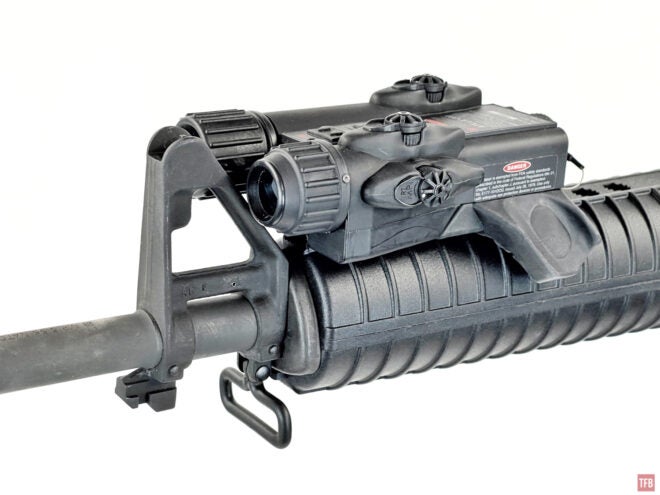Welcome back to another article in our weekly Friday Night Lights series. Last week we took a look at a long-since-discontinued cooled thermal imager called the FLIR SeeSpotIII. Well, today we take a look at a laser aiming module of the same vintage. Circa 2003 NVEC Inc came out with the ATILLA-200 laser/illuminator.
Lasers @ TFB:
- Friday Night Lights: Wilcox BOSS Xe – Laser Aiming Device + Red Dot
- Friday Night Lights: MP5 Laser – Setting Up Your MP5 For Lasers
- Friday Night Lights: Full Power Laser Showdown – MAWL-DA vs NGAL vs RAIDX vs LA5 UHP
ATILLA-200
ATILLA-200 is actually an acronym, it stands for Acquired Tactical Illuminator Laser Aimer. It was made by the Night Vision Equipment Company (NVEC) Inc. Like the Flir SeeSpotIII, the ATILLA-200 came out in 2003. It was designed to replace the PEQ-2 aiming laser. Not sure how much it was adopted but considering I can find plenty of surplus PEQ-2 and rarely used ATILLA-200, I think I have my answer. The PEQ-2 is a full-power Class IIIB laser but it is only 50 mW. The ATILLA-200 is also a Class IIIB laser but it puts out a 150 mW laser! Now that is just the IR Illuminator. The ATILLA-200 also has a full-power aiming laser that is 50 mW.
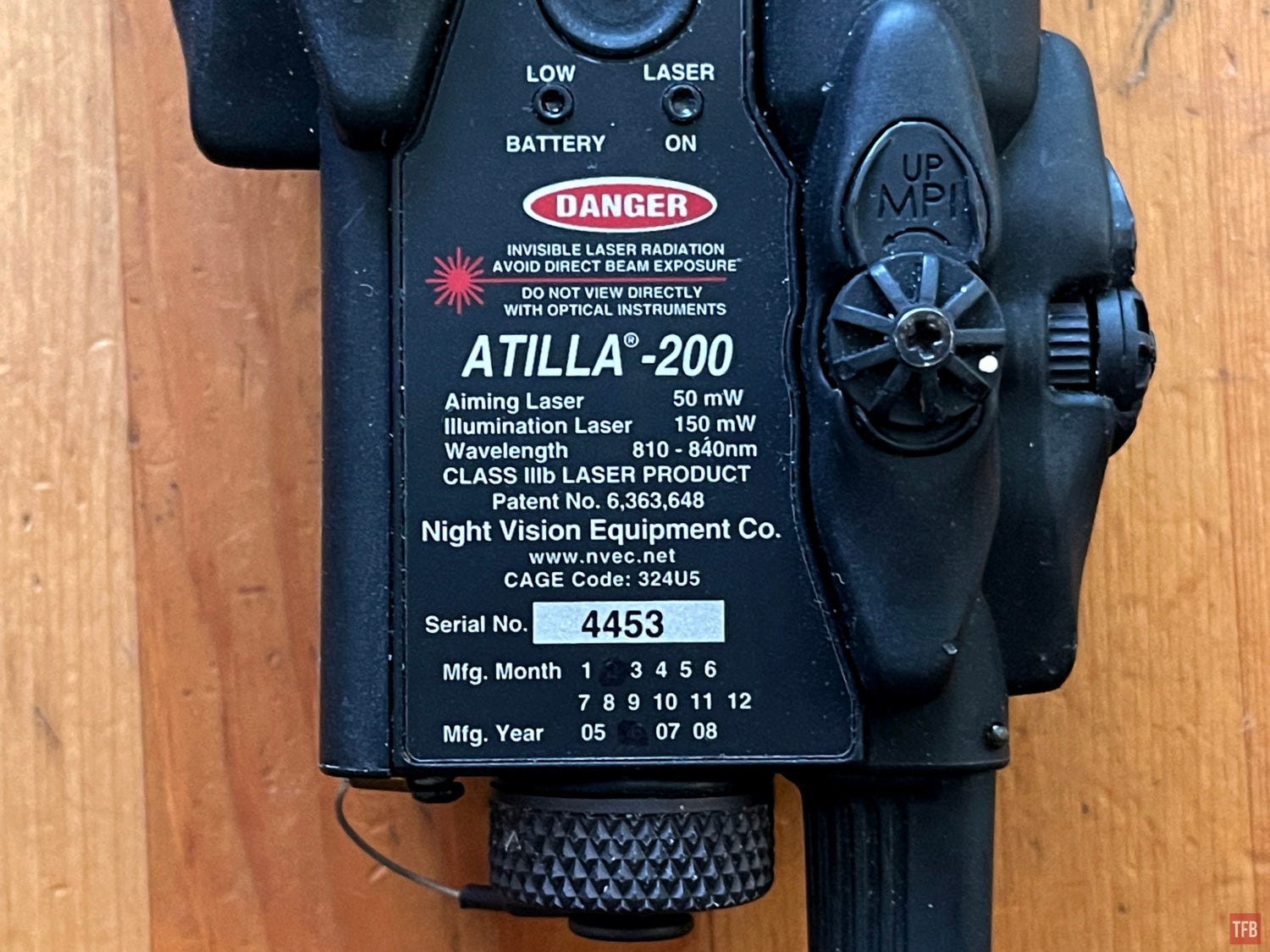
Look at that, 150 mW! The ATILLA-200 is not just a bright and powerful laser. It has features that I have not seen on a lot of other lasers. One of the first things you will notice is that the windage and elevation adjustments for both the aiming and illuminator lasers are tool-less.
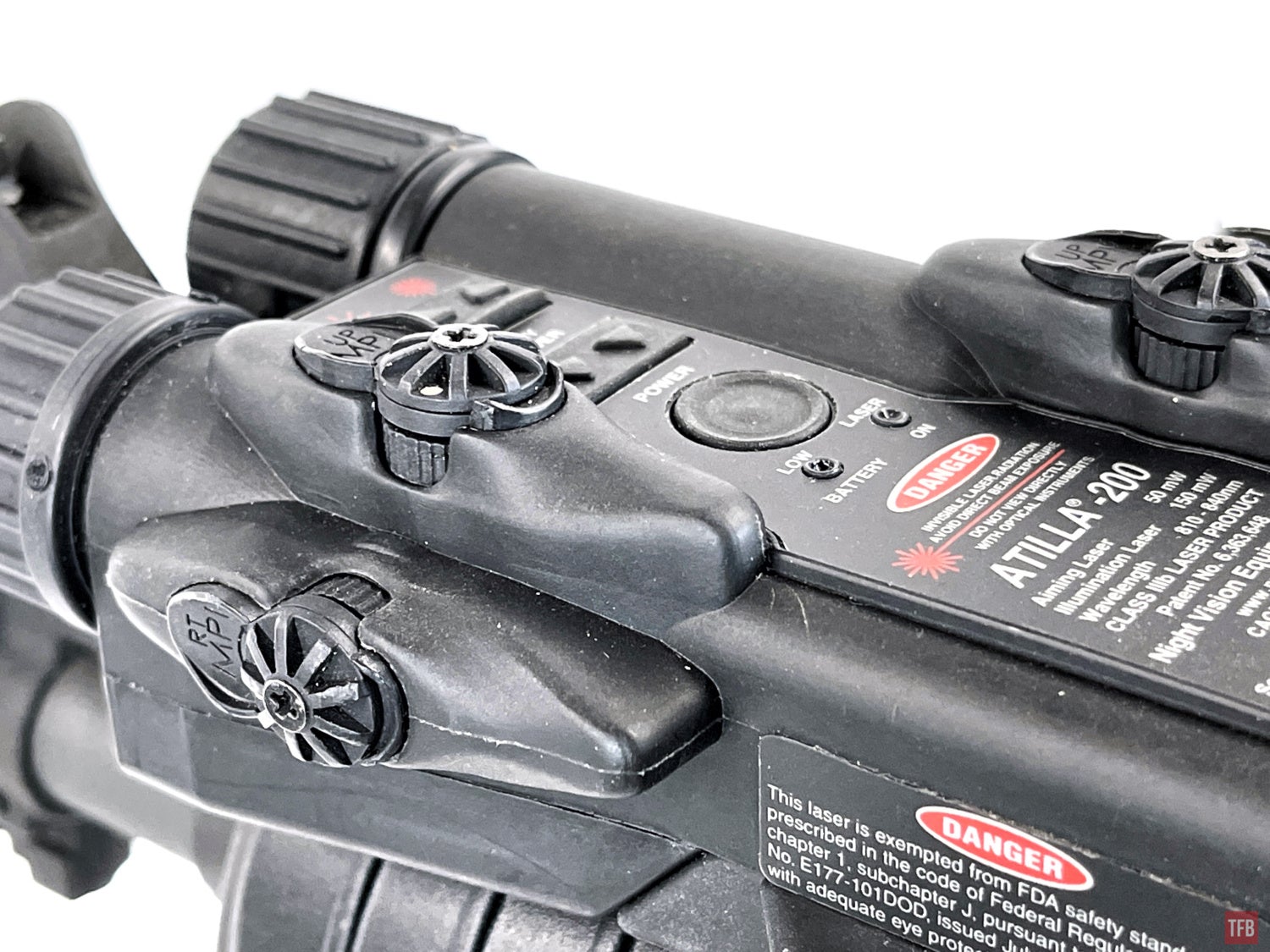
While toolless adjustment is not new or exclusive to the ATILLA-200, what is unique is that each laser’s output can be independently adjusted. The left side up and down buttons control the brightness of the illuminator while the right side buttons adjust the aiming laser brightness.
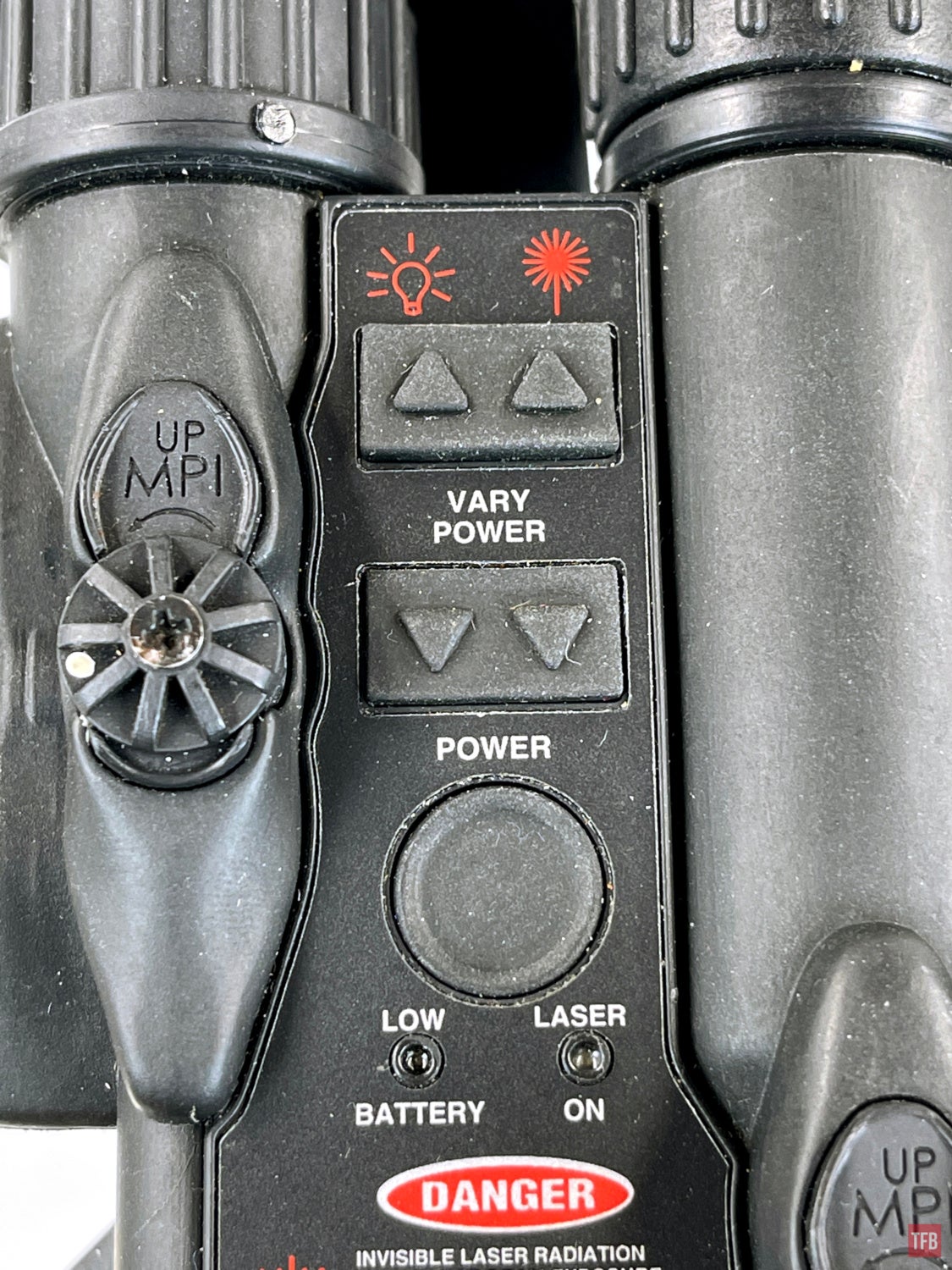
Just below the power adjustment buttons is the main activation button. Below that is the laser on indicator as well as the low battery indicator light. The main power switch for the ATILLA-200 is a rotary switch at the back right-hand side of the housing, just to the right of the battery cap. This is also the mode selection switch. In the photo below, the switch is set to off. Rotate clockwise to choose the other five settings.
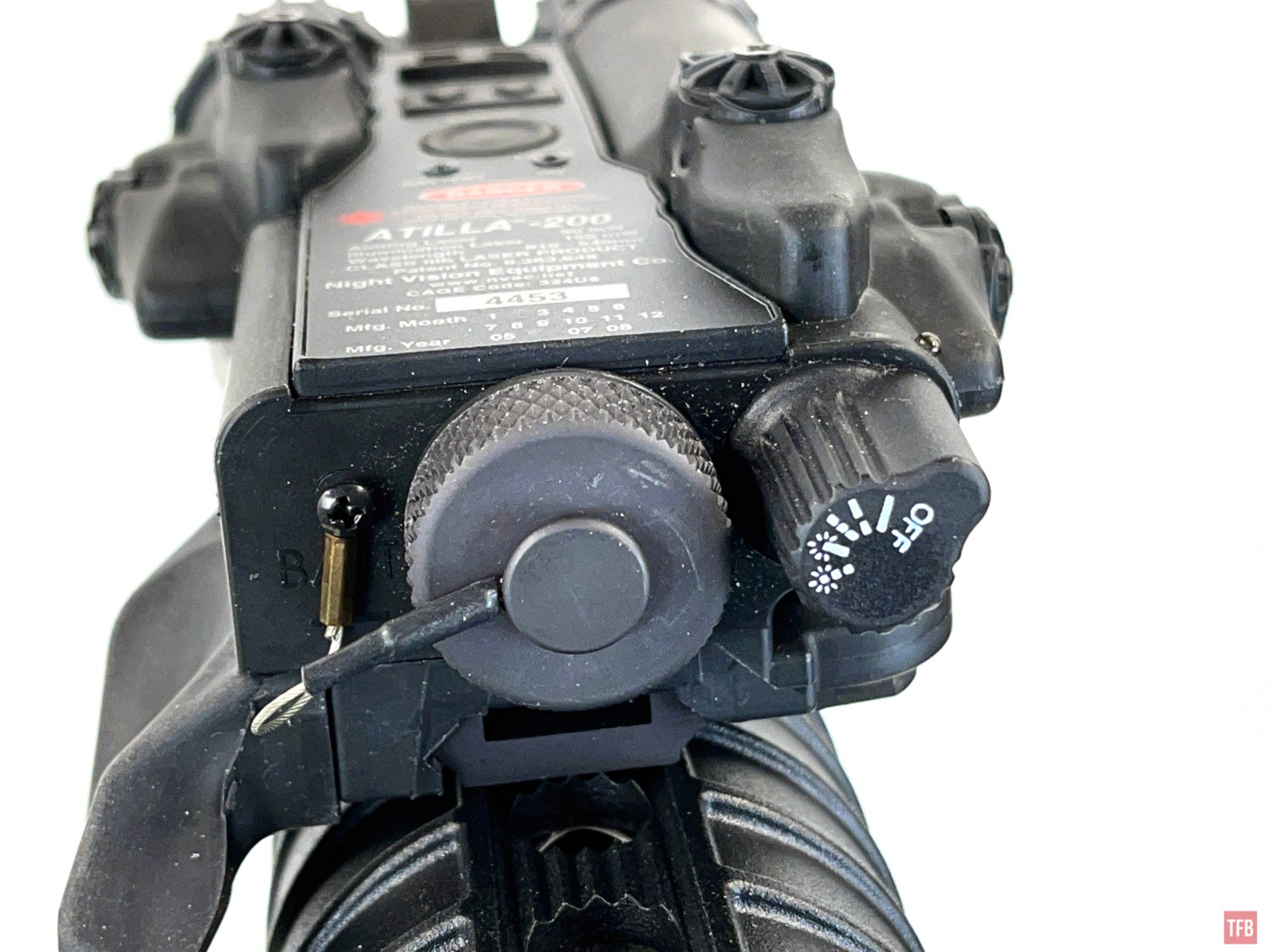
Here is an explanation of the different modes.
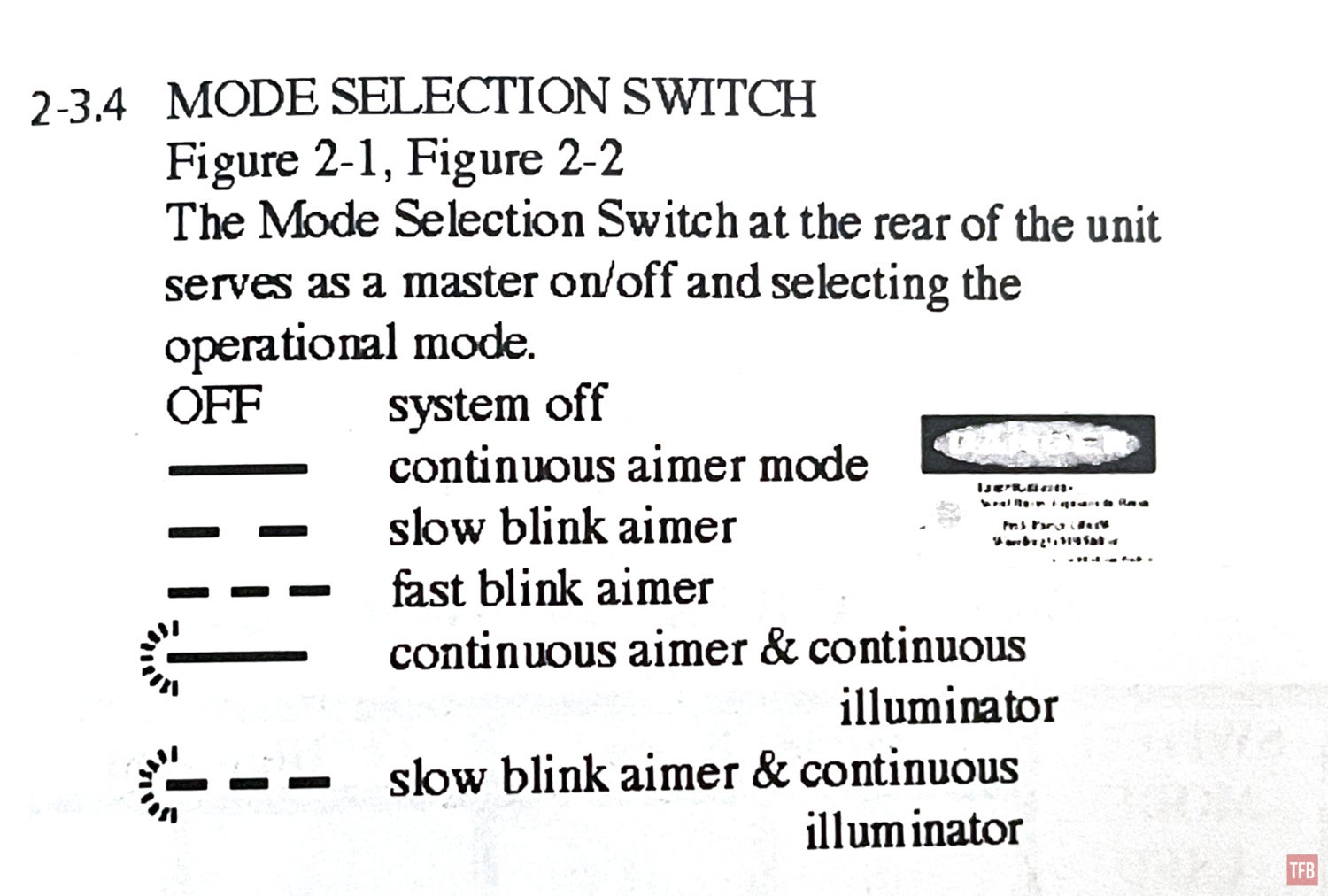
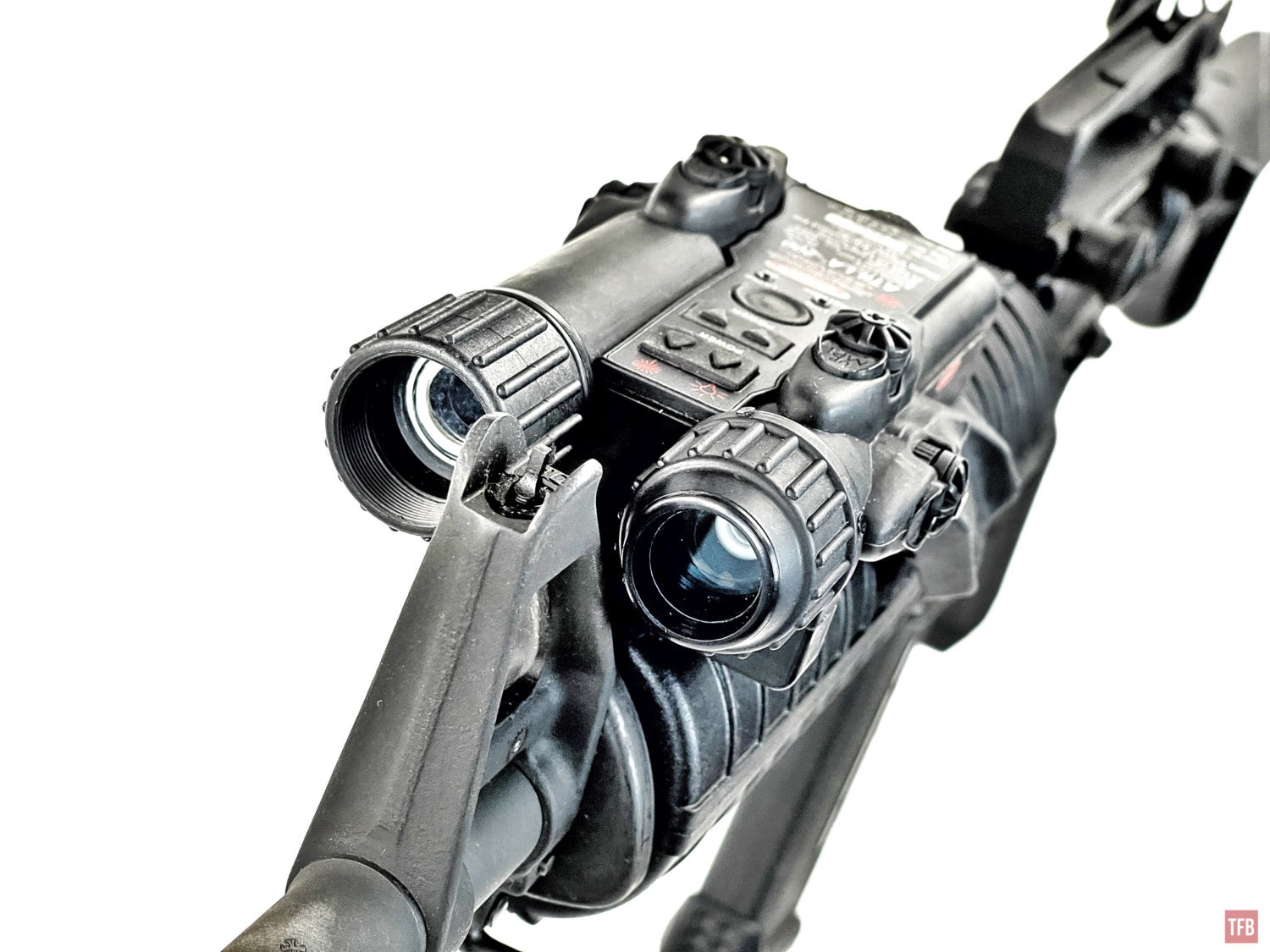
The ATILLA-200 was designed, like a PEQ-2 to have the illuminator on the left side with the aiming laser on the right. So it can clear the front sight base of an M4 or M16.
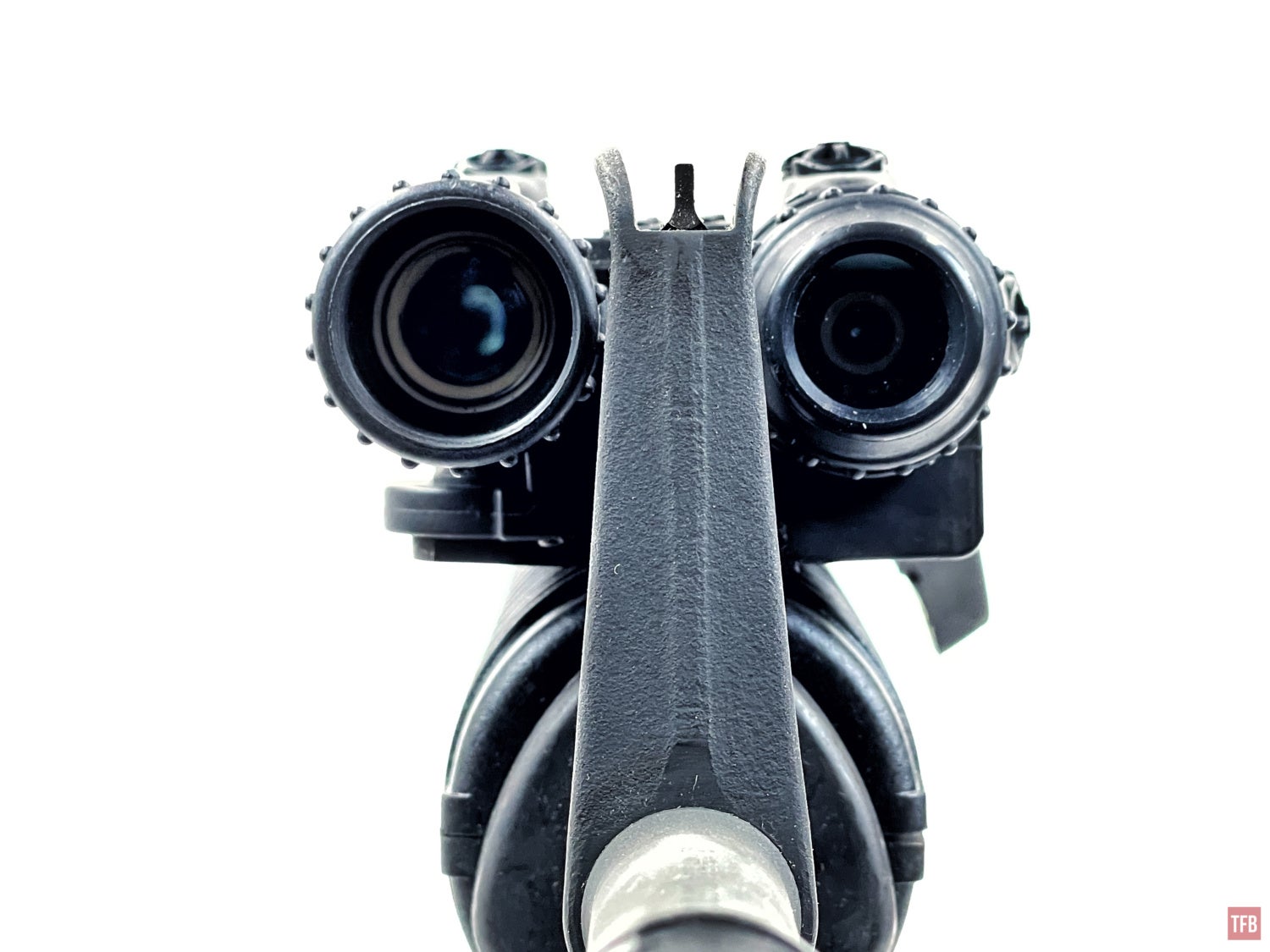
There is a removable shroud for the aiming laser which acts as an off-axis lens to limit the visibility of the laser source by 3 degrees. What is truly interesting is the divergence adjustment of the ATILLA-200 illuminator. You rotate the “illumination laser focus knob”. The illuminator can be tightened down to a divergence angle of 1 mR and widened out to 240 mR which is about 13º. But what really sets the ATILLA-200 apart is how it changes the beam divergence. Most lasers that have an adjustable beam divergence use a rotating focus knob. Once you widen or tighten the beam you have to rotate the knob in the opposite direction to change it back. Not the case with the ATILLA-200. Let’s say you start at 1 mR tight divergence. Rotate the illumination laser focus knob clockwise to widen it. Once it reaches the max divergence of 240 mR you can keep rotating the focus knob and the beam will start to get smaller. Keep rotating clockwise and when the laser goes back to the tight 1 mR divergence you can keep spinning and the beam will widen out again. That alone is pretty cool.
The ATILLA-200 has another feature that you do not normally see in US-made lasers. It has an offset removable switch that controls the output of the laser.
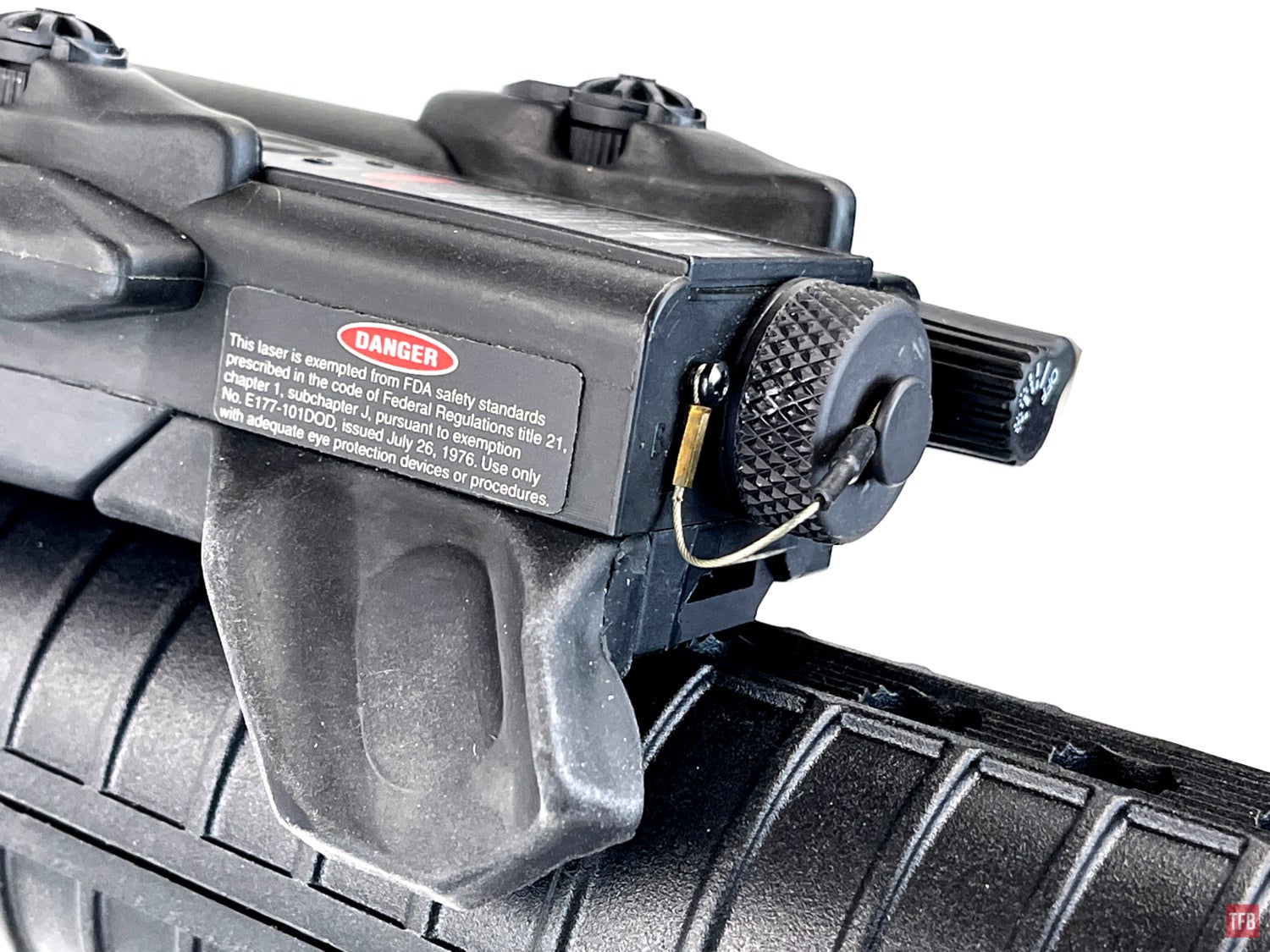
NVEC designed the ATILLA-200 so that it needs the removable switch to unlock its full power. If the switch is removed, the laser will revert to eye-safe output. The aiming laser drops down to 0.64 mW and the illuminator drops from 150 mW all the way to 2.5 mW.
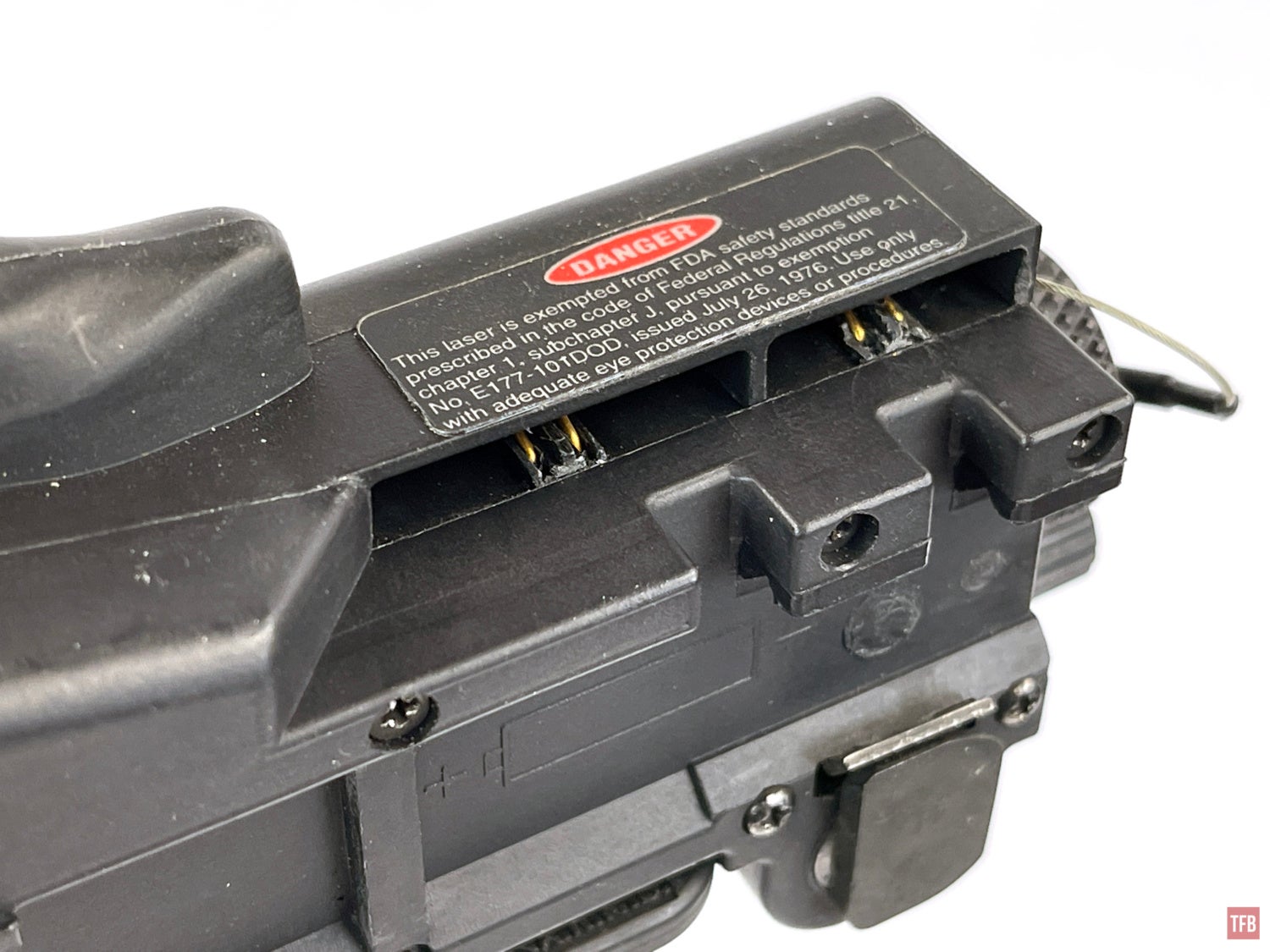
The paddle switch removed.
The ATILLA-200 comes with two switches. Black is for full power, and blue is for eye-safe practice.
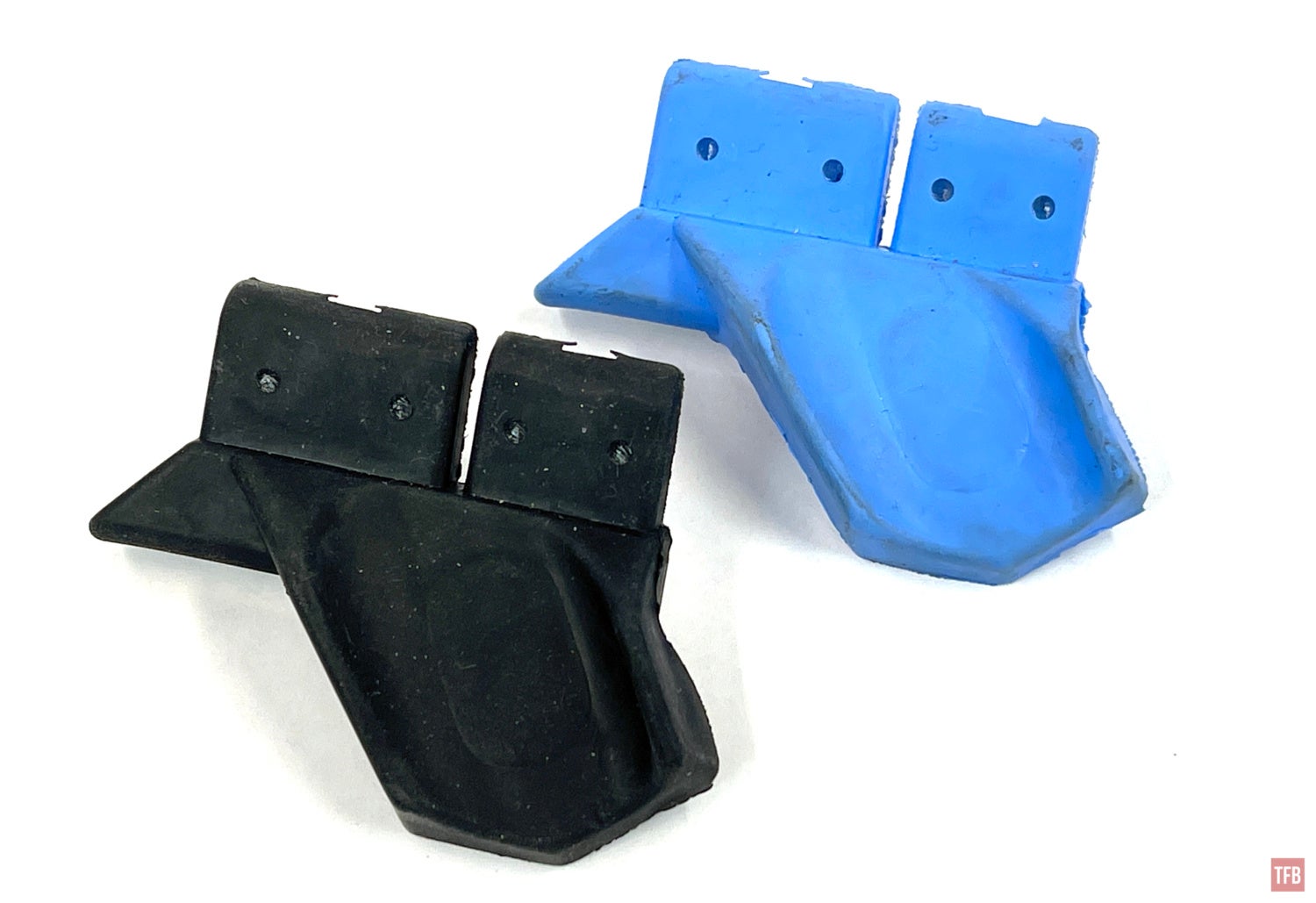

The kit also comes with two remote 14″ cable switches. Also a black and blue version.
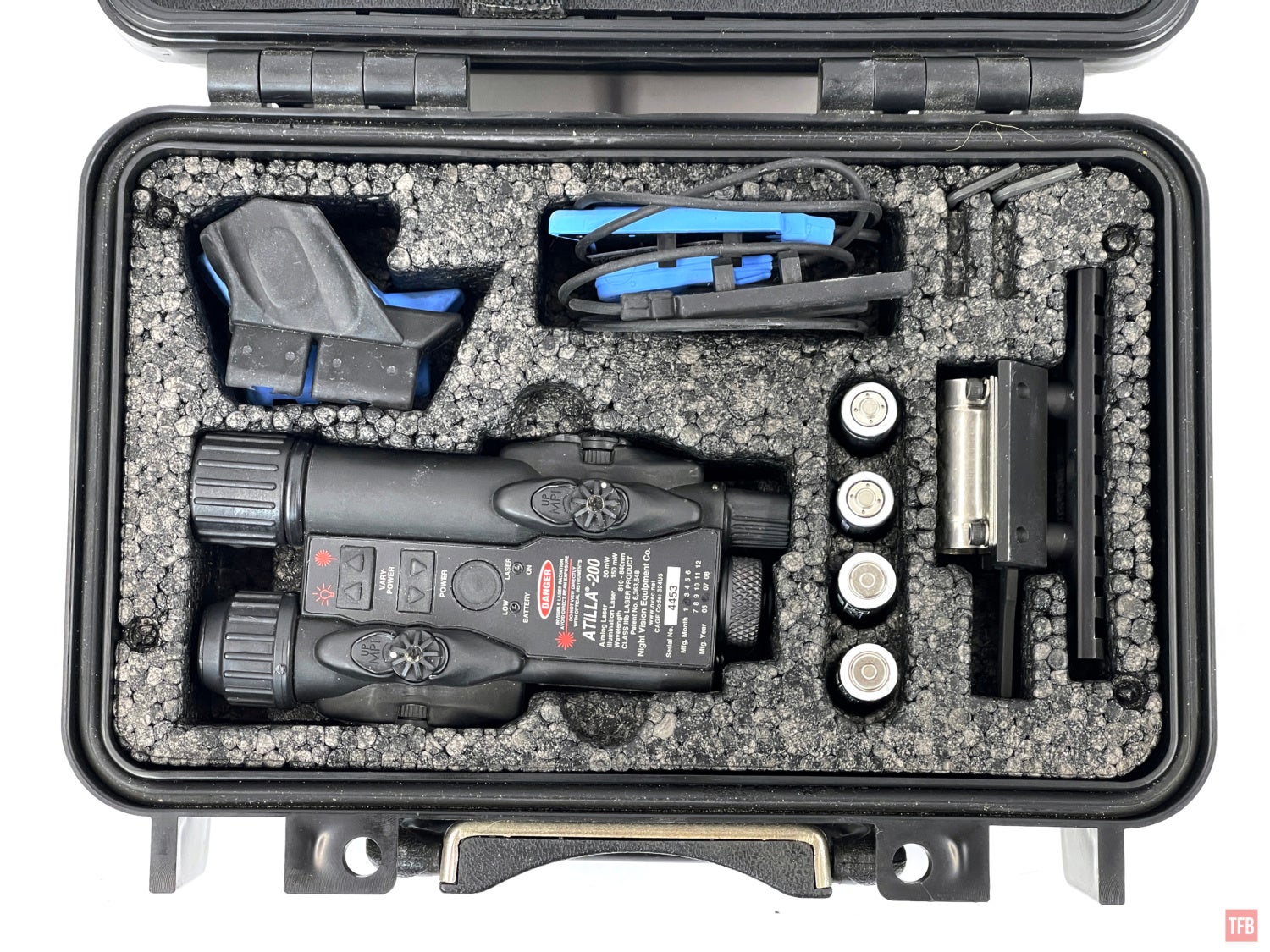
The kit also comes with a barrel mount, similar to the one used for the PEQ-2 and PAQ-4. It attaches to the barrel of an M4 or M16 and bolts a 1913 rail to it. When mounted to an M4, the paddle switch is extremely ergonomic for right-hand shooters. Unfortunately, there is no way to use this for left-handed shooters. You could use the 14″ remote cable switch and route it to the right side of the gun. Oh, also this was developed before thumb-over-bore became all the rage.
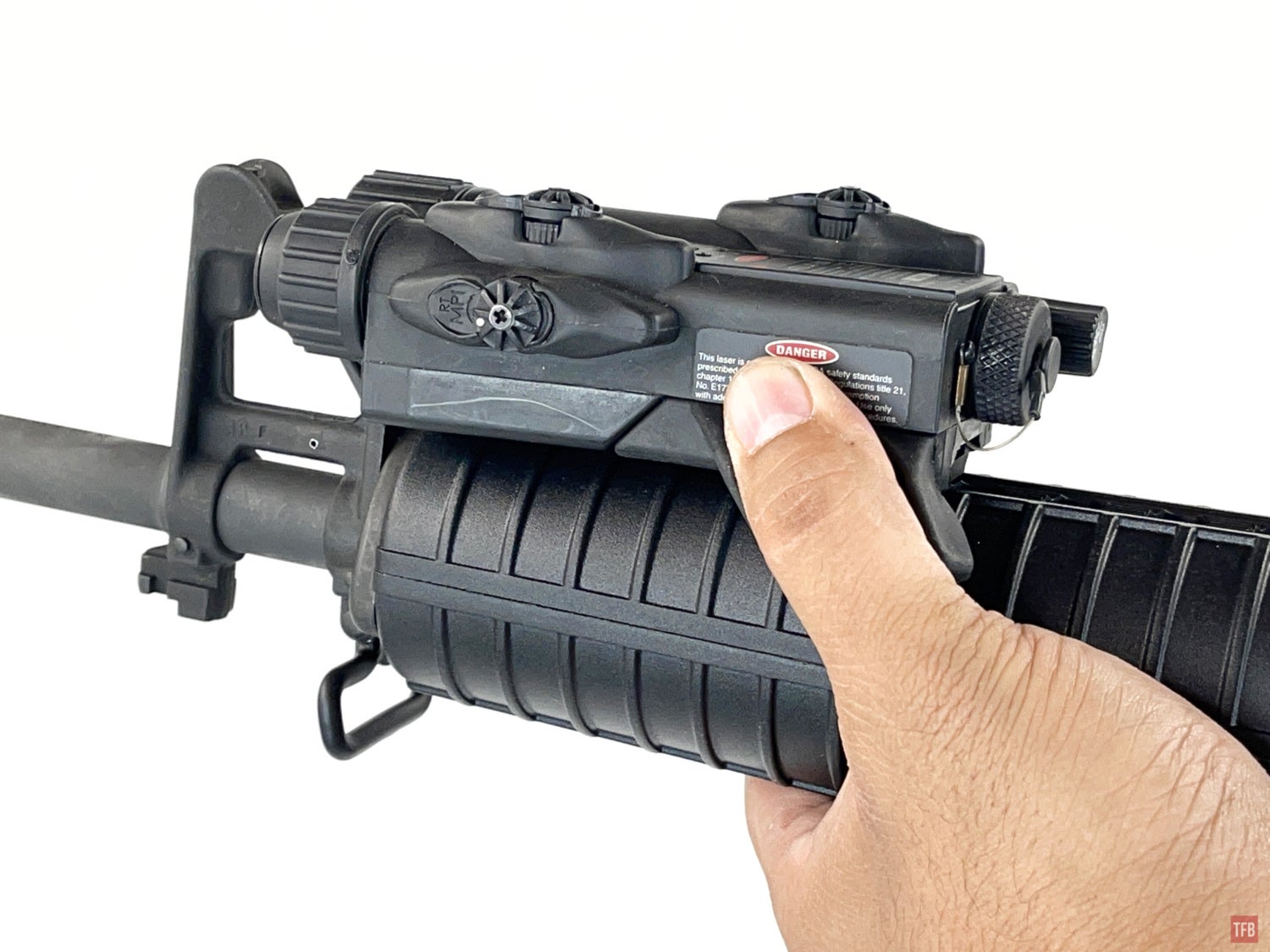
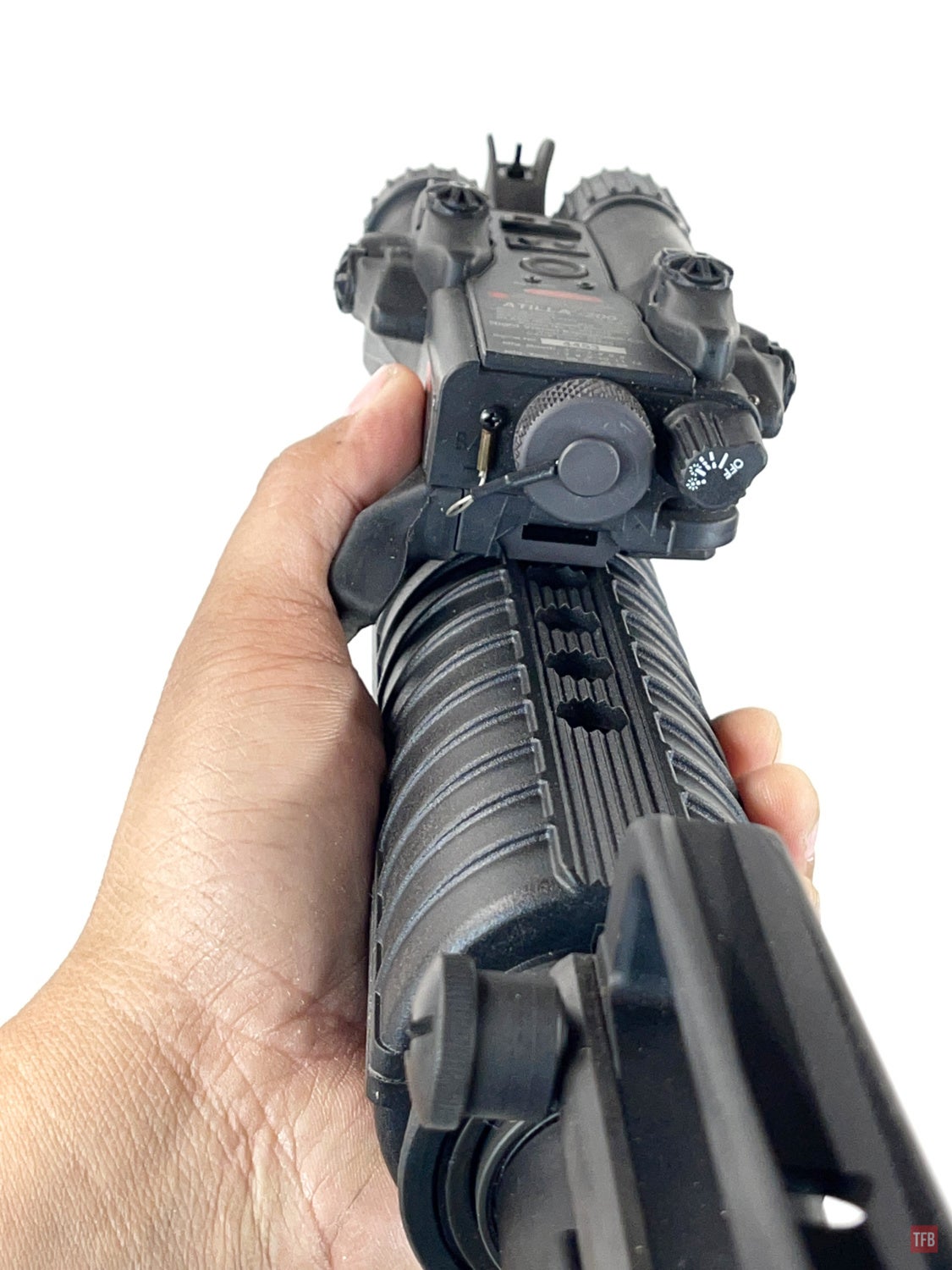
The ATILLA-200 has two QD throw levers that are bolted directly to the laser housing. The housing is made of polymer.
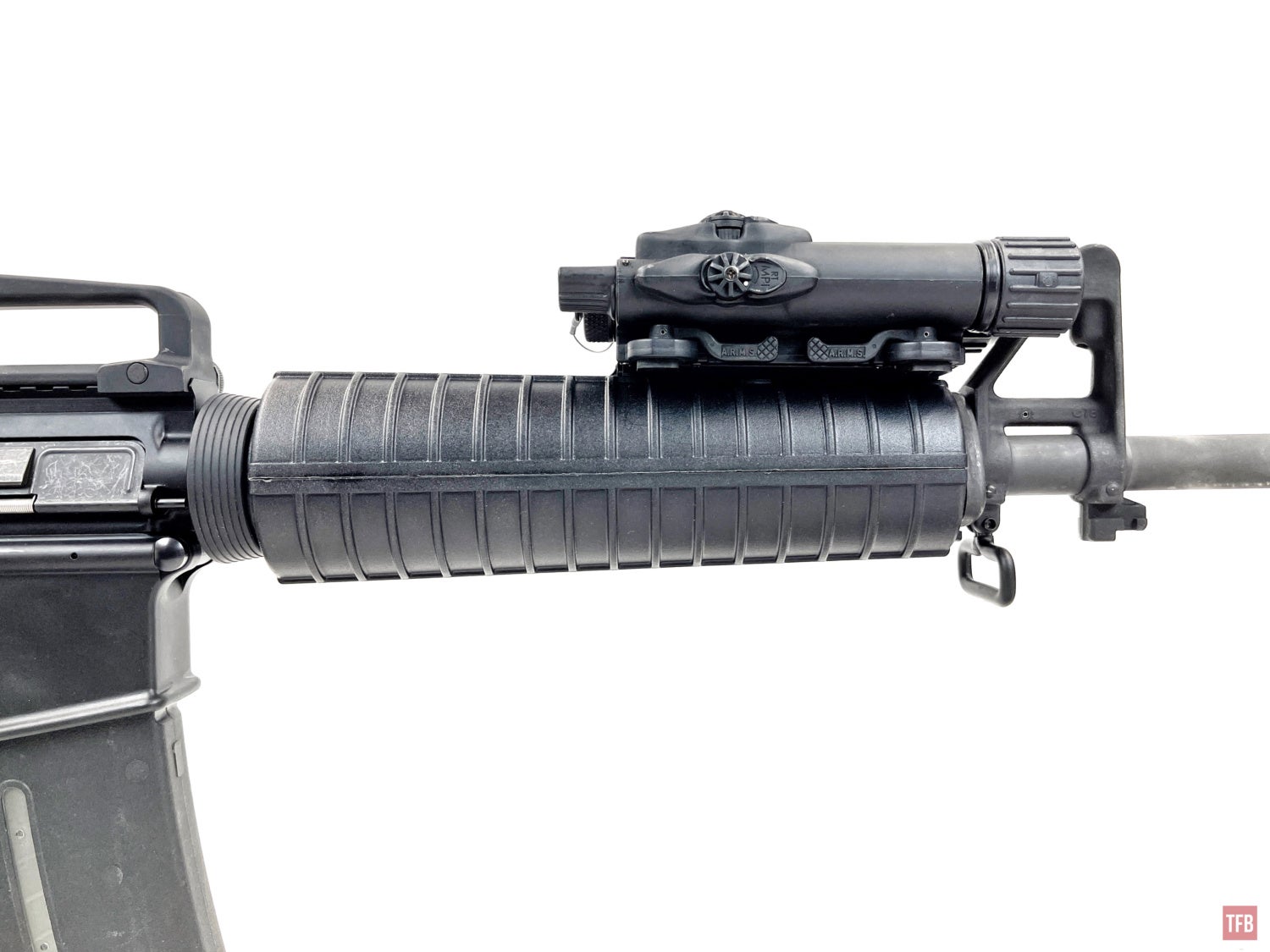
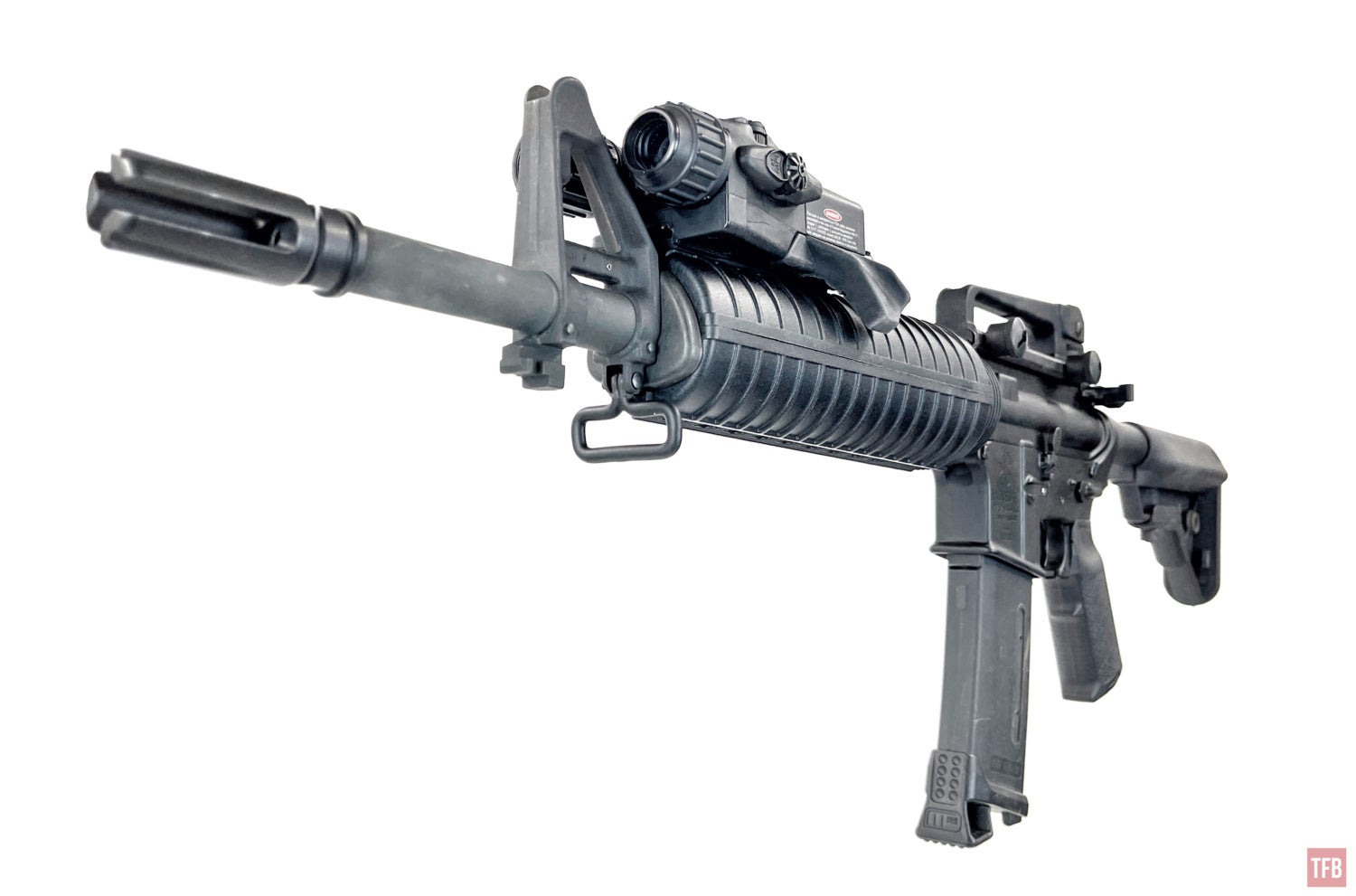
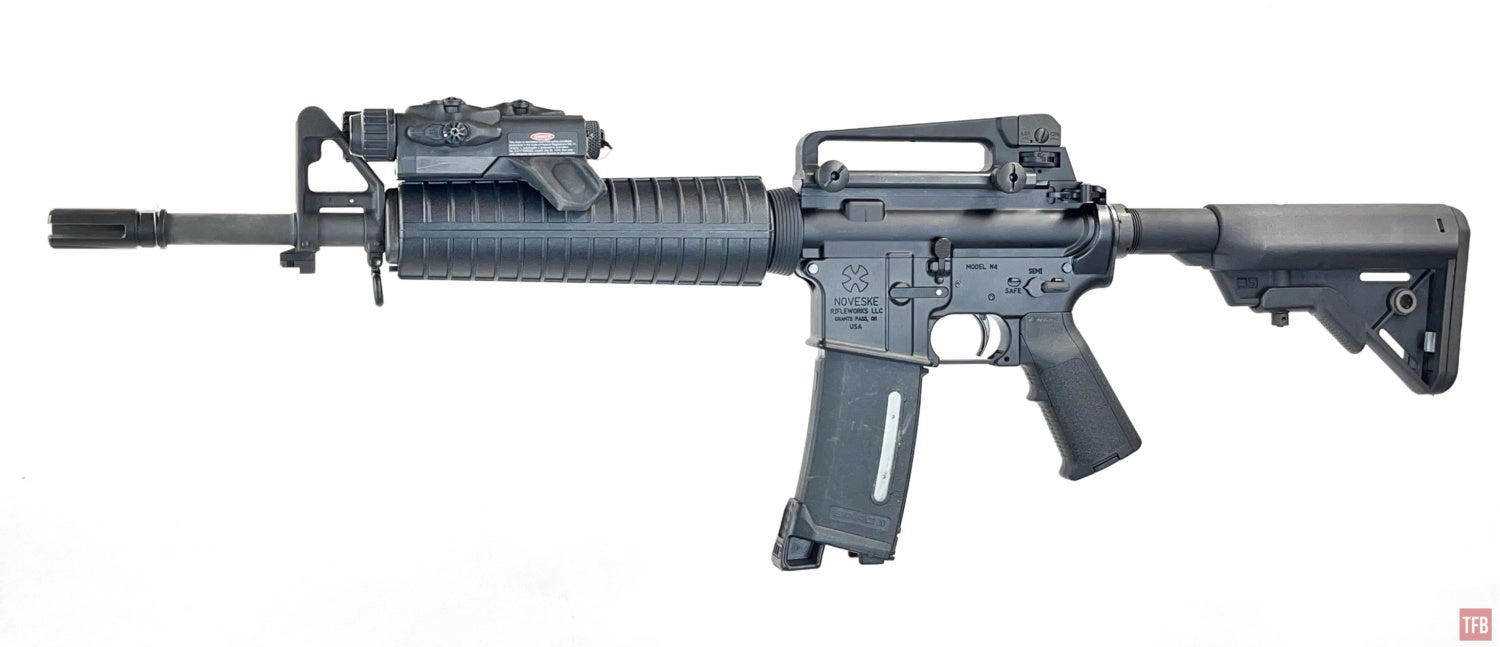
I am sure you are thinking “that laser looks a bit tall”, well it sort of clears the iron sights. Here is what the sight picture looks like through the iron sights. The tip of the front sight just pokes up enough that you could use it.
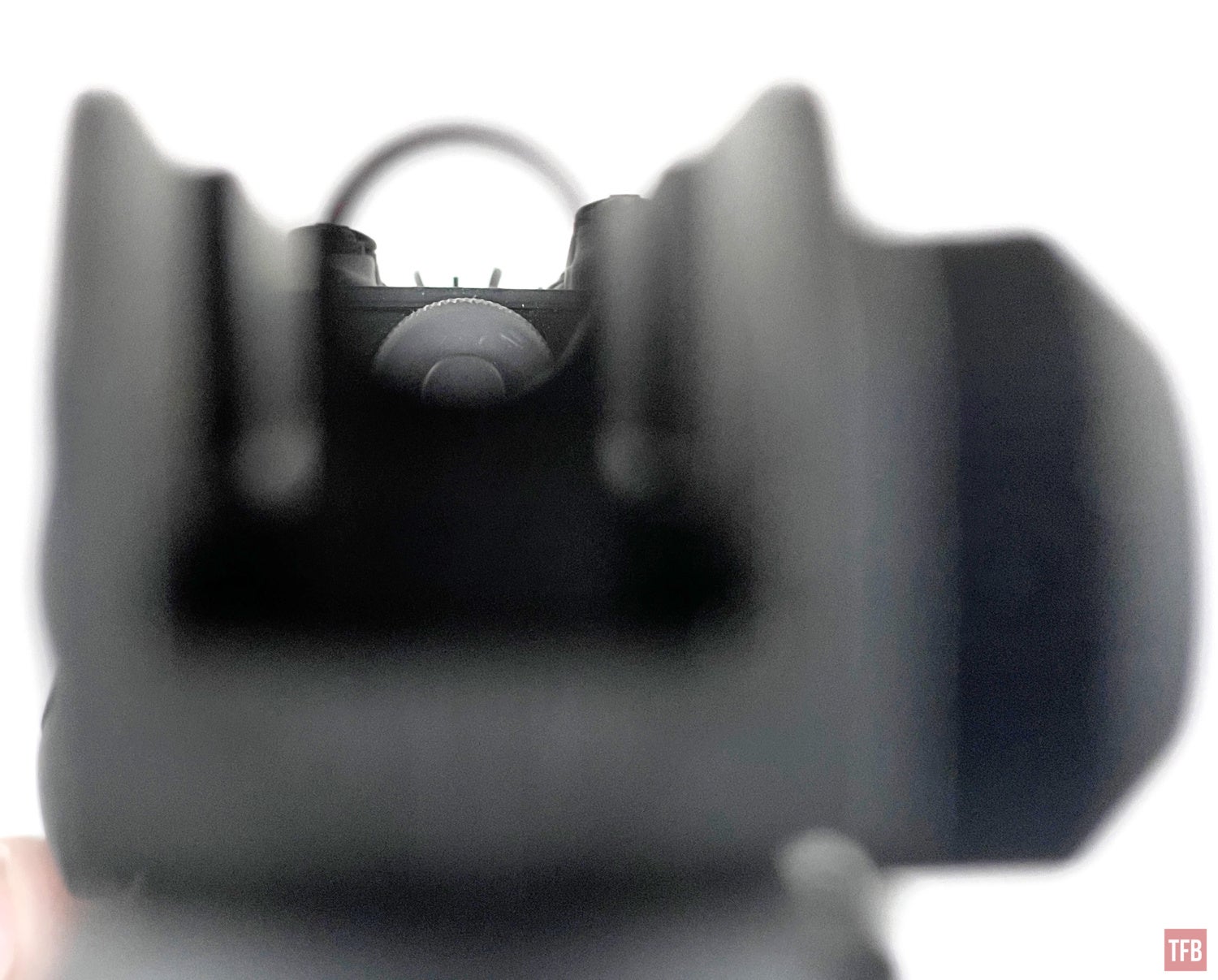
The actual laser beam is nothing much to write home about. This unit has a clean beam but I am not sure if that is a characteristic with all of them or just this particular unit. Considering it is not VCSEL, I think other units might have a dirty illuminator beam pattern like you find on Insight and Steiner lasers.
Final Thoughts Of The ATILLA-200
To be honest, these are a little obscure. Most people go for the Insight/L3 ATPIAL aka PEQ-15. The demand for the LA5 and UHP variants is still high. Not many people want the ATILLA-200. It is a little bit big compared to modern laser aiming modules. The non-ambidextrous design makes it less desirable. Add to the fact that the laser’s full potential is only unlocked with the removable black switch. Yet it is hard to deny the strengths of the ATILLA-200. The illuminator is 150 mW and not only can you easily adjust its divergence (size of the beam) but you can adjust the power output at your whim with a simple button press. Other lasers that have this feature have it buried in some convoluted menu system, I am looking at you Wilcox Raid X. Then add the fact you can control the brightness of the aiming laser. Often I find full-power lasers to be too bright in very dark environments, like the forests of Oregon where Hop likes to shoot. The full-power aiming laser blooms and obscures the target. One minor oversight by NVEC is that you cannot isolate the aiming laser or the illuminator. They both turn on and there are no black out covers.
There is a benefit to the ATILLA-200 obscurity. The price for an ATILLA-200 is not terrible. They are not as desirable so the lack of demand helps to keep the price down. They typically sell for $2,000 or less. A lot more attractive than the $3,000-$5000 I have seen for full-power PEQ-15 LA5 and PEQ-15 UHP. Unfortunately, I do not think these are produced anymore so if you want one, you will have to search gear groups for a secondhand one.
 Your Privacy Choices
Your Privacy Choices
